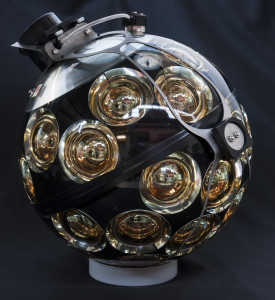Detection of Ultra-High-Energy Neutrino in Mediterranean Sea Marks Milestone

In February 2023, scientists achieved a groundbreaking milestone in cosmic research by detecting an ultra-high-energy neutrino at the KM3NeT telescope, located 2,450 meters beneath the Mediterranean Sea. This particle, originating from a distant galaxy, is estimated to carry an energy level of 120 petaelectronvolts (PeV), making it twenty times more energetic than any previously detected neutrino. The significance of this discovery, published in a report in the journal Nature on February 12, 2025, not only highlights the capabilities of the KM3NeT telescope but also opens new avenues for understanding the universe's most violent phenomena.
The KM3NeT observatory, situated off the coast of Sicily and Toulon, France, is specifically designed to detect elusive neutrinos—subatomic particles that interact weakly with matter. According to Dr. Paschal Coyle, a neutrino physicist at Aix-Marseille University and spokesperson for KM3NeT, "These particles provide unique insights into the most violent cosmic events." The neutrino's trajectory, which approached Greece nearly horizontally, confirmed its cosmic origin, distinguishing it from muons typically generated by atmospheric cosmic rays.
The Mediterranean Sea's deep and clear waters present an ideal environment for neutrino detection. The transparent seawater allows for the observation of faint light flashes generated when neutrinos interact with matter, while also shielding the detectors from atmospheric interference. As of now, KM3NeT has expanded its capabilities from 21 to 33 detector chains, significantly enhancing its sensitivity to such cosmic events.
The historical context of neutrino detection dates back to the first observations made by the IceCube project at the South Pole in 2012. Dr. Elisa Resconi, a physicist involved in the IceCube project, described the event as "colossal," emphasizing the importance of this detection in piecing together the origins of ultra-high-energy cosmic particles.
The leading theories regarding the origins of these high-energy neutrinos suggest they are produced in extreme astrophysical environments, such as supermassive black holes, supernova explosions, or active galactic nuclei. The KM3NeT project contributes to a global network of neutrino observatories, enhancing our understanding of cosmic processes and phenomena.
The implications of this discovery extend beyond the immediate scientific community. As we continue to uncover the mysteries of ultra-high-energy neutrinos, researchers hope to answer fundamental questions about the universe's most energetic processes. The collaboration between various scientific institutions and the deployment of advanced technologies in unexpected environments, such as the depths of the Mediterranean, exemplifies humanity's relentless pursuit of knowledge in the face of cosmic uncertainty.
As KM3NeT and similar projects continue to monitor the Mediterranean depths, scientists anticipate further detections of ultra-high-energy neutrinos, which could ultimately shed light on the enigmatic cosmic engines that drive these extraordinary particles. Each detection not only adds to our understanding of the universe but also reinforces the collaborative spirit of scientific exploration, positioning humanity closer to unraveling the mysteries of our cosmic origins.
Advertisement
Tags
Advertisement





